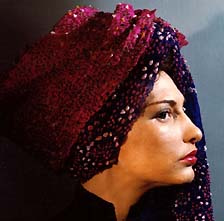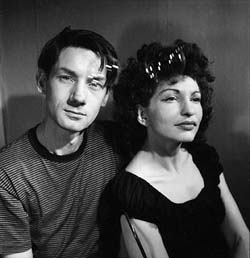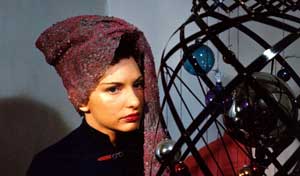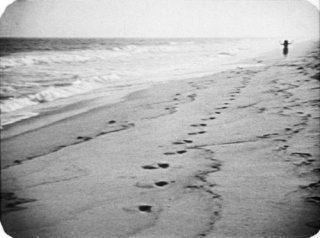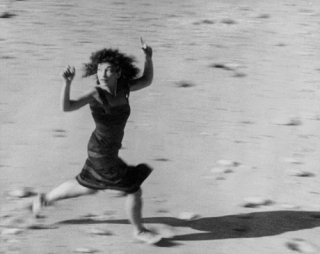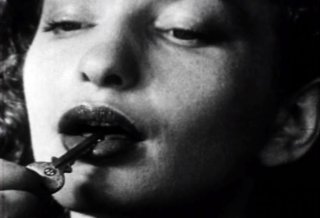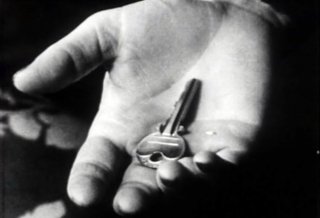As a filmmaker, Maya Deren's output was fairly limited: only six short films, all made in 16mm, created during a 10-year period. Yet Deren's influence, both in the creative process and in the exhibition of independent cinema, is still felt to this day.
"In the Mirror of Maya Deren" is an excellent new documentary by Martina Kudlacek that focuses on the extraordinary life and astonishing productions of this groundbreaking artist. Perhaps it is a bit strange that it took so long for a film about Deren to be made, but this engrossing and fascinating feature more than makes up for the wait.
Deren was born Eleanora Derenkovskaya in Kiev in 1917. Her family emigrated to America when she was five and she was educated a posh Swiss boarding school and at Syracuse University and New York University. An early marriage to a Socialist activist did not pan out (the man's name is coyly not presented here), and the young Deren found work in various secretarial positions, including a stint with legendary choreographer Katherine Dunham (who recalls Deren in this film with very measured fondness). Deren came to Hollywood with Dunham's company and met Alexander Hammid, an exiled Czech filmmaker. Deren and Hammid fell in love and married, and in their first collaboration she purchased a second-hand 16mm Bolex camera to create an avant-garde short film.
The result of their collaboration was the 1943 "Meshes of the Afternoon." The silent, black-and-white film served up surreal imagery reminiscent of the Buñuel-Dali collaborations of the late 1920s, but its ethereal quality plus Deren's exotic on-screen presence as a woman lost in a strange dream made it stand out as a distinct and original work of art. "Meshes of the Afternoon" would later win an award at Cannes for experimental filmmaking, the first time such an honor was given to an American and a woman. (Sadly, Deren and Hammid divorced after the Cannes award was presented.)
"In the Mirror of Maya Deren" presents generous excerpts from Deren's films, mercifully in their original silent versions and not with the new scores added years later by her third husband, composer Teijo Ito. As a filmmaker, Deren broke new ground and taboos with her stunning imagery. "At Land" (1944) brings three women into a contact of an obviously Sapphic nature, while "Ritual in Transfigured Time" (1946) dared to erase color lines by having Trinidad-born Rita Christiani in a starring role where race is not an issue. Deren's fascination with capturing the grace and poetry of modern dance on film provided her audiences with "A Study in Choreography for Camera" (1945) with Talley Beatty as the lithe focus of the lens, "Meditation on Violence" (1946) with Chao-Li Chi mixing martial arts into balletic movements, and "The Very Eye of Night" (1955), with choreography by the legendary Antony Tudor and performances by his Metropolitan Opera Ballet School.
Working outside of the Hollywood system and with no chance for mainstream theatrical release of her film, Deren single-handedly wrote new rules, which are still in effect for the indie film world. She sought self-financing via an application for a Guggenheim Foundation Fellowship, making her the first filmmaker to seek and obtain such funding. In 1946, she leased New York's Provincetown Playhouse to present her short films on a single bill called "Three Abandoned Films," thus simultaneously inventing the notion of a shorts anthology as a feature and the concept of four-walling a theater. Deren later booked national tours of her films, also laying the groundwork for self-distribution (an avenue which has more than come into its own in the past few years). And, of course, her pursuit of avant-garde filmmaking clearly inspired the later works of such iconoclasts as Kenneth Anger, Stan Brakhage and Jonas Mekas (the latter two are among those interviewed in this film).
One of the joys of "In the Mirror of Maya Deren" is the ultra-rare presentation of material, which could have been Deren's masterpiece. Between 1947 and 1955, Deren conducted extensive research into Haitian culture, filming voodoo-inspired rituals and ceremonies and recording the island's folk music. While her time in Haiti produced the classic book "Divine Horsemen: The Living Gods of Haiti" (1953), her plans to create a documentary on the Haitian culture never came anywhere near completion. For the first time, portions of this long unseen are shown here and the result is astonishing. Deren's hand-held camera brought her into the middle of celebrations, capturing the rapture and frenzy of participants who seemed possessed by both the force of ritual and perhaps the power of voodoo, while the singing and instrumentals she recorded is a raw, rich slice of Haiti's unique musical heritage. In many ways, Deren's unfinished material rivals the genius of Orson Welles' aborted Brazilian-based documentary "It's All True."
Sadly, Deren's work did not generate consistent financial stability and her death by cerebral hemorrhage in 1961 may have been caused in part due to periods of hunger brought about by simply having no money for food. While "In the Mirror of Maya Deren" does not speculate on where her career could have gone had she survived, it nonetheless offers a remarkable tribute to one of the few people who genuinely deserves to be known as a pioneer of filmmaking. In the genre of films about films, "In the Mirror of Maya Deren" is among the best.








 , i know, i'm always afraid i'll bore people
, i know, i'm always afraid i'll bore people

